Index
Gainwardov GTX 670 Phantom’s cooler is definitely a looker. The fans are hidden behind the heatsink so it may trick users into thinking it’s a passive cooler. Still, if you peek through the heatsink, you’ll see silhouettes of two fans. 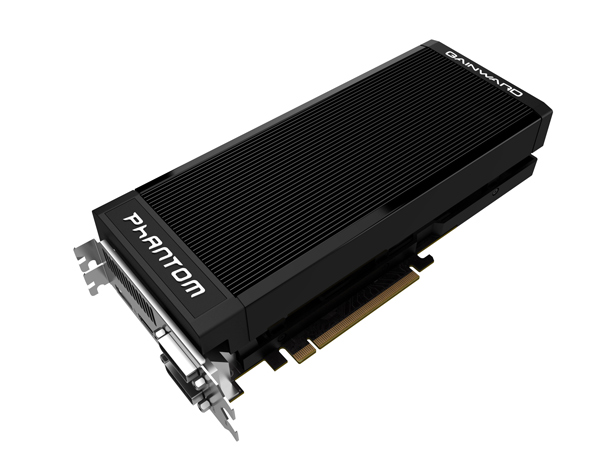
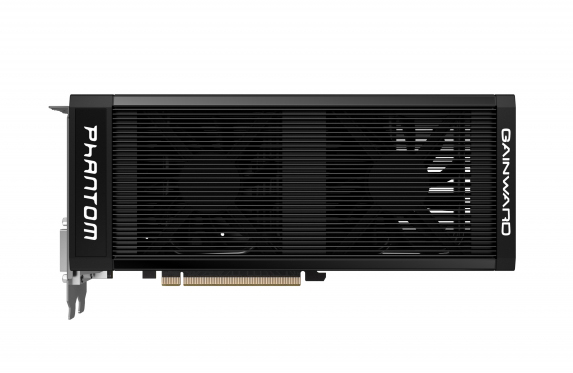
GTX 670 Phantom is about 24.7cm long, which is about the same as the reference GTX 670.
Below is a picture of Gainward’s 670 2GB graphics card, which runs at reference clocks. As you can see, they more than just a bit different.
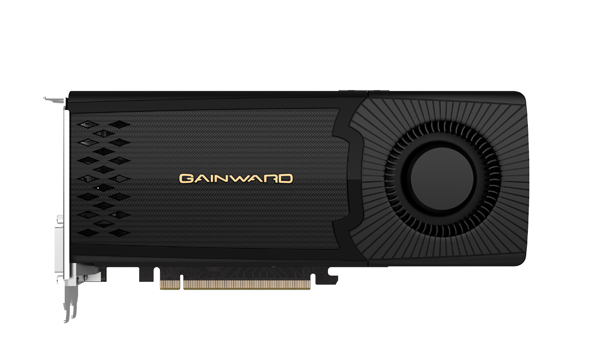
Gainward GTX 670 2GB
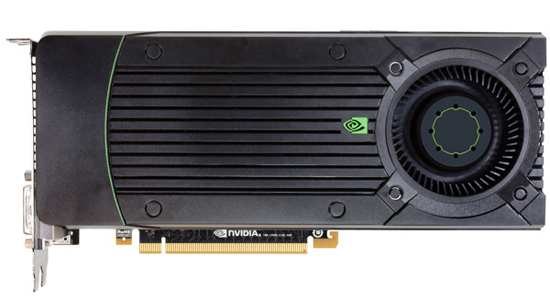
Nvidia GTX 670 2GB
Things get interesting once you flip the GTX 670 over. Namely, the PCB ends where the power connectors are placed.
The PCB is only 17.2cm long.

Reference GTX 670 cards are powered via two 6-pin power connectors, just like the factory overclocked Gainward GTX 670 Phantom.
The reference card’s TDP stands at 170W, but the higher clocks on Gainward’s GTX 670 Phantom’s higher clocks should increase this number slightly. Still, two 6-pin power connectors coupled with PCI Express power will be more than enough for the GTX 670.
Gainward used its own PCB, which is pretty clear once you see that its memory modules aren’t distributed as on the reference GTX 670 (picture below). Namely, odd and even memory chips were placed on opposite sides of the PCB, while the Phantom’s memory chips are all on the front.
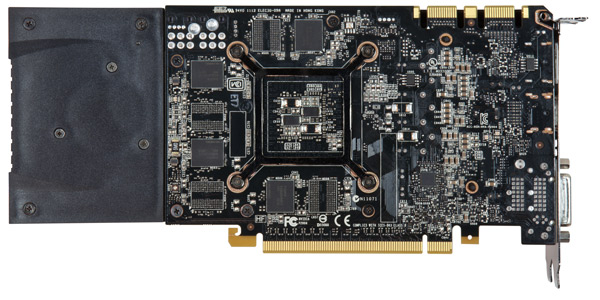
Nvidia GTX 670 2GB
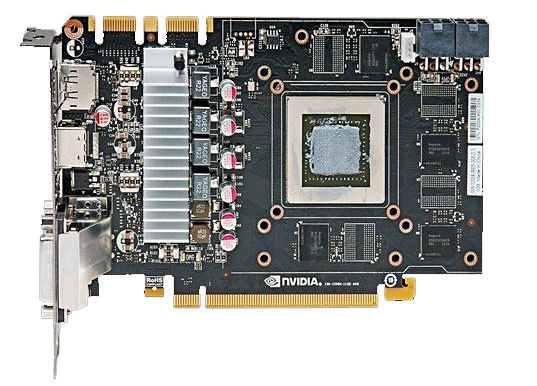
Nvidia GTX 670 2GB
The following photo shows GTX 670 Phantom with the cooler off.

GTX 670 comes with 2GB of memory. It has eight memory chips, just like the reference card.
Good news for Nvidia fans is that the company kept the identical memory system used on its GTX 680 card, meaning four 64-bit memory controllers (256-bit memory interface) and 2GB of GDDR5 memory. The memory runs at 1502MHz (6008MHz effectively), again just like the GTX 680.
Gainward’s GTX 670 Phantom runs Hynix memory chips (model No: H5GQ2H24AFR-R0C). The chips are specified to run at 1500MHz (6000MHz GDDR5 effectively). GTX 670 Phantom’s memory runs at 1527MHz (6108MHz effectively)
.
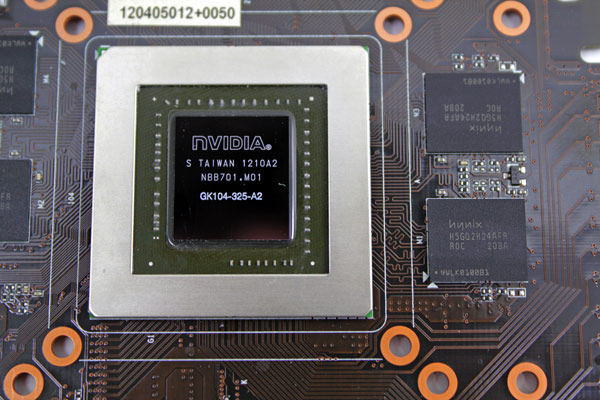
The Phantom’s heatsink houses three heatpipes and it’s not a mystery as to why the card takes up three slots. The fans are on the cooler and are protected with an aluminum grill. Taking off the plastic shroud that holds the fans, e.g. for cleaning or something, is a breeze.
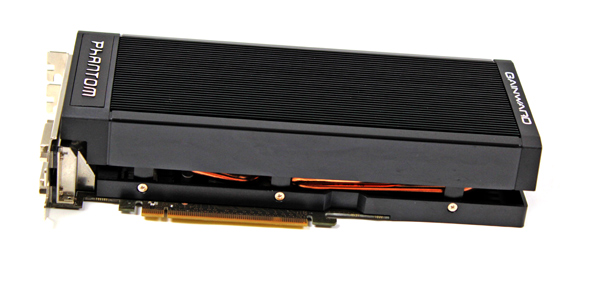
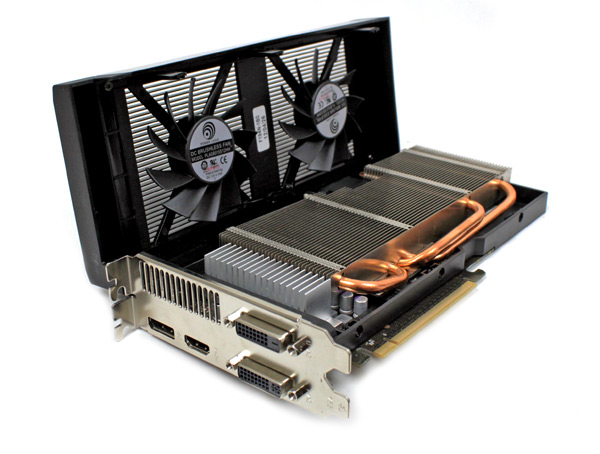
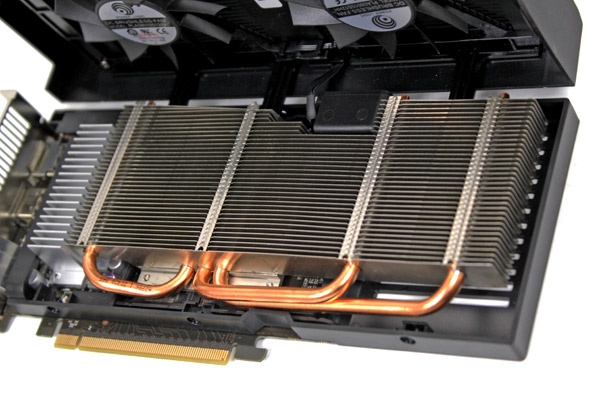

The memory is air cooled and you can see a few modules through the heatsink.
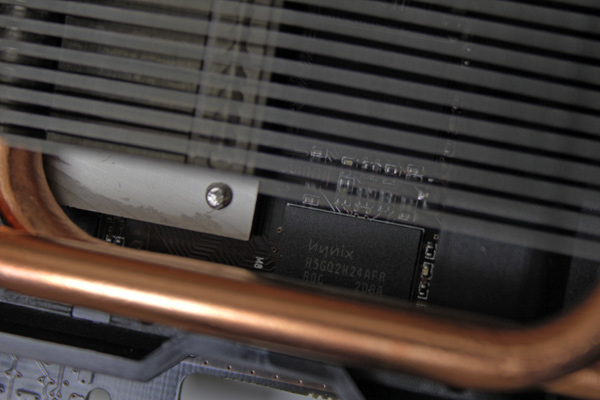
For the cooler base Gainward used aluminum instead of more commonly used copper.

Gainward GTX 670 Phantom graphics comes with two dual-link DVIs, but only allows for analog VGA. If you want to use VGA, you’ll have to use the DVI connector that’s level with HDMI and DisplayPort connectors. It’s important to note that Nvidia addressed its previous multi-display “disadvantages” so Kepler based cards can now run up to four displays simultaneously.

The card has two SLI connectors.




